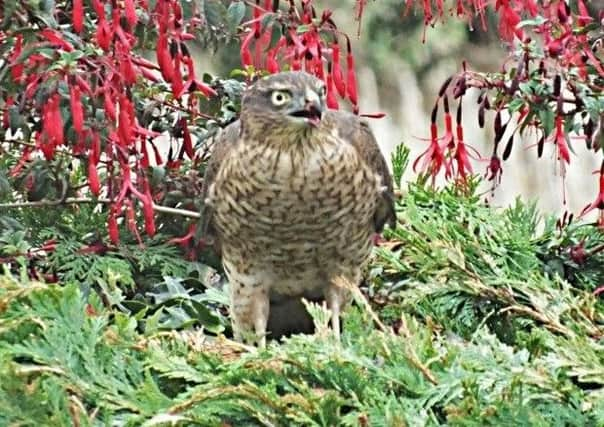An indiscriminate killer that gets on gardeners' nerves


Last week, though, I caught the murderer red-handed. Or perhaps I should say red-clawed. It was a beautiful female sparrowhawk and she was tearing into a woodpigeon on my drive, sending into the air a fountain of feathers and spreading a mess like a burst pillow across the front lawn.
The scene was identical to those which had confronted me the previous week when I found the remains of a blackbird followed by a greenfinch and then what I think might well have been a starling.
Advertisement
Hide AdAdvertisement
Hide AdThis sparrowhawk is clearly finding easy meals around my home above the Aire Valley, picking off the hungry visitors attracted to people’s gardens by well-stocked feeders and bird tables. But whether we should consider sparrowhawks as homocidal maniacs or as a bird of beauty has become a controversial question.
There’s no doubt that sparrowhawks are stunning to see. The male has a slate-blue black and orange-brown bars on its chest, while the female - about four inches larger - has a browner appearance. Both have piercing yellow eyes and fearsomely long yellow talons.
The best description of the bird’s character when seen at close quarters came from the great ornithologist T. A. Coward, who wrote that it gives “an impression of nervous tension and capacity for swift movement unequalled by any other raptor”.
Sparrowhawks were in serious decline until the mid-1990s but are experiencing a remarkable recovery thanks to the banning of organochlorine pesticides. They have particularly benefitted from the modern culture of feeding birds in gardens.
Advertisement
Hide AdAdvertisement
Hide AdOne sparrowhawk is said to have seen a caged canary in a window, smashed through the glass and managed to get at the bird. Usually, though, they operate stealthily by keeping good cover in trees until they decide on their prey, then pounce with remarkable bursts of acceleration and agile twists and turns that give small birds no chance of escape. I frequently come across them on farmland, darting along hedgerows and picking off house sparrows and finches with apparent ease.
In Yorkshire it has long been known as the pigeon hawk because of its capacity to decimate flocks of prize racing pigeons. But it is now people who feed birds in their gardens who are the most vocal critics of sparrowhawks.
This letter in The Yorkshire Post some years ago testified to the strength of feeling: “It is very sad to see so many birds taken on a daily basis,” wrote a reader from Harrogate. “Blackbirds, song thrushes, long-tailed tits, finches, collared doves and a lesser-spotted woodpecker - it is just too many. To hear a blackbird scream while being taken by a hawk is terrible.”
Upsetting as this may be, there is no evidence of sparrowhawks reducing populations of small birds. In fact, according the RSPB the raptor’s commonest prey species, including the great tit and robin, are actually increasing in numbers.